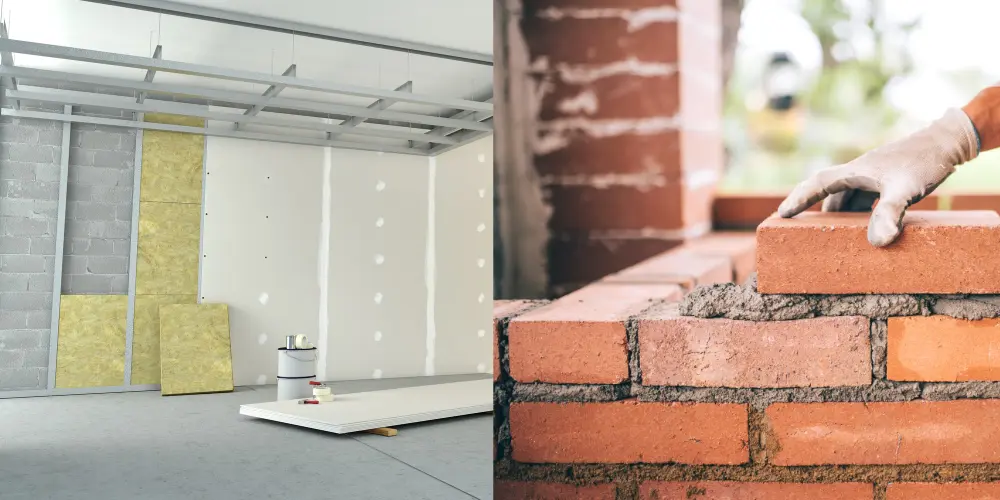For many years in Spain, brick has been the material of choice for interior partitions in homes, giving it the reputation of being the “real walls”. Growing up in homes with brick walls and the lack of alternatives for decades have made the adoption of plasterboard, better known as pladur, a slow process. But, nowadays, which is better plasterboard or brick in construction?
We are Leba, a construction company in Malaga and Costa del Sol. If you are looking to build your house, do not hesitate to contact us!.
What is better plasterboard or brick in construction?
To find out which is better plasterboard or brick in construction we will compare the advantages of each to reach a conclusion. Let’s see:
Advantages of brick partition walls
- Affordable cost: Basic materials such as brick, sand and cement are inexpensive and easy to find.
- Versatile transportation: Their size and ease of stacking allow for efficient transportation, even in tight spaces.
- High strength: Ideal for withstanding impacts and hanging heavy objects without problems.
- Fine details: Allow greater freedom in finishes, especially useful in areas such as bathrooms.
The brick tradition in Spain shows the evolution towards alternative materials. Now, Spain has manufacturers such as Pladur, Placo and Knauf, offering a variety of plasterboard partitions.
At Leba we are always at the forefront and create modern concepts in our projects. As a construction company in Malaga and Costa del Sol this is one of our objectives when designing the project, contact us!.
Advantages of plasterboard
- Dry installation: Eliminates the need for wet materials, reducing drying and cleaning times.
- Lightweight: Ideal for renovations, does not overload the existing structure.
- Quick installation: The metal structure and panels are quickly assembled.
- Smooth finish: Ready to paint after taping joints and applying paste.
- Installation flexibility: Facilitates the incorporation and modification of internal installations without the need for cutting.
- Eco-friendly: Generates less debris and allows the reuse of leftover materials.
- Movement-resistant: Able to absorb small vibrations and avoid cracks.
Plasterboard adapts to different needs thanks to its variety of types such as water resistance (H1), fire resistance (F), or acoustic insulation (Fonic) among others, offering specific solutions for each situation.
Thus, to the question of what is better plasterboard or brick in construction, we conclude that plasterboard is better. The modern alternatives present a series of benefits that, in general, position them above the traditional brick.
So why is brick still being used more?
The reluctance towards plasterboard versus brick for internal partitions is mainly due to myths derived from poor installations. Let’s demystify some common criticisms:
- Load-bearing capacity: Contrary to popular belief, properly installed plasterboard, with adequate double board and dowels, can support heavy loads, including those of significant objects such as countertops, by means of internal reinforcement.
- Sound insulation: Plasterboard offers excellent sound insulation, especially if Fonic plasterboard is used and internal insulation is added.
- Cost: Although plasterboard may initially appear more expensive, when considering labor and time costs, the total price is comparable to brick. The bad reputation in terms of cost and acoustic or load-bearing efficiency comes from the incorrect application of the material.
Inconveniences and complaints associated with plasterboard usually originate from poor organization and execution of the work. Although it may seem simple, the installation of plasterboard partitions always requires the intervention of a qualified technician who can offer adequate advice to the client and an experienced installer who masters the technical aspects necessary for a correct installation, such as the distance between uprights, the height above the floor, the spacing between screws and the type of paste to be used.
This has been all about what is better plasterboard or brick in construction. We hope you have been helpful! Do not hesitate to continue reading our blog, we recommend what is the integral reform of a house.


